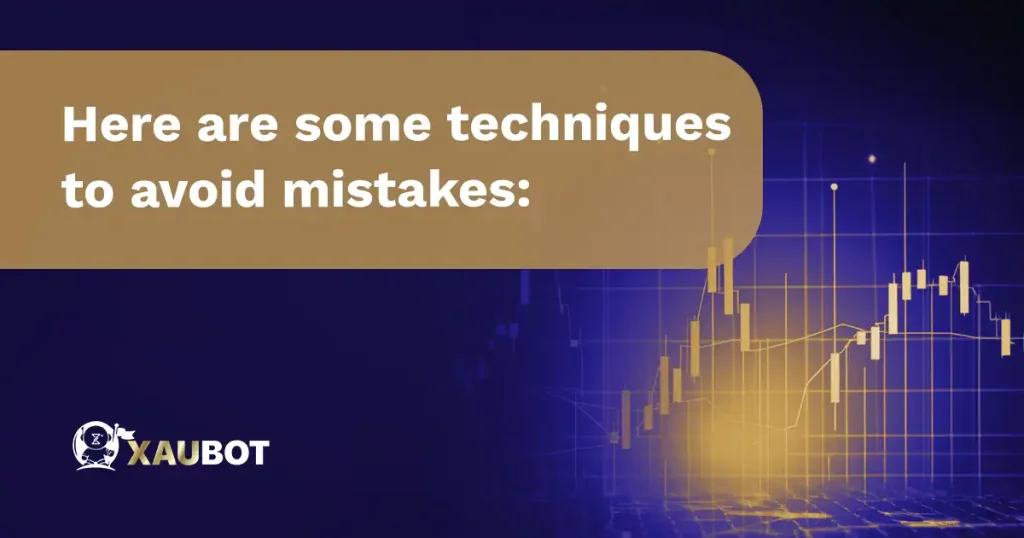Welcome to the world of forex trading, where fortunes are earned and lost based on the fluctuation of a currency’s value. In this topic, we look at frequent forex trading blunders and offer practical solutions to avoid them. Understanding and avoiding these hazards is critical for protecting your cash and boosting your trade performance, whether you’re a seasoned trader or a rookie.
Let’s go on this instructive adventure together to boost your chances of success in this volatile market.
- Recognizing common mistakes: Identifying common mistakes is important for a number of reasons. It can help you to avoid making the same mistakes yourself, and it can also help you to understand the factors that contribute to mistakes. It can be helpful in developing strategies to prevent mistakes from happening in the future.
The most common errors made by FX traders:
They aren’t completing their homework: It is one of the most frequent mistakes made by forex traders. Before you begin trading, you must first comprehend the market and the factors that influence currency pricing. It contains economic statistics, interest rates, political happenings, and technical analysis.
Risking on more than they can afford to lose: Another common mistake is putting too much money at risk in a single trade. If the trade goes against you, it might lead to major financial troubles. It is critical to develop and adhere to a risk management strategy.
Stop losses are not used: Stop losses are an essential instrument for risk control in forex trading. Many dealers, however, do not employ them. It is a bad idea because stop losses can assist you limit your losses and protect your capital.
No trading plan strategy: A trading plan serves as a guide for your trading activity. It should contain your trading objectives, risk management plan, and trading style. A trading plan will assist you in staying on track and making better trading selections.
Emotional trading: Emotions can be a significant barrier to success in forex trading. If you allow your emotions to take over, you are more likely to make poor trading decisions.
Trading without a demo account: It is a good idea to practise on a demo account before trading with real money. It will allow you to learn the ins and outs of forex trading without putting any real money at risk.
You can improve your chances of success in the forex market by identifying frequent mistakes and implementing tactics to avoid them.
- Strategies to avoid MISTAKES: Everyone makes mistakes However, by employing a few easy tactics, you can reduce the number of errors you make and improve your chances of success.
Here are some techniques to avoid mistakes:

Do your homework: Make sure you have all the information you need before making any decisions. It entails conducting extensive research on the subject and comprehending all of the possible outcomes of your actions.
Make a plan: When you have a strategy, you are less likely to take rash actions that you will later regret. Before you take any action, consider your choices and create a plan of action.
Recognize your limitations: Everyone possesses both talents and faults, be mindful of your personal limitations and avoid undertaking tasks that are beyond your abilities.
Request assistance: If you are having difficulty with something, don’t be hesitant to seek assistance. There are people who want to help you, so don’t be scared to ask.
Be patient: Learning and growing take time. Don’t expect to be perfect right away. Keep learning and improving, and you will eventually achieve your objectives.
Be organised: It will assist you in staying on target and avoiding foolish blunders.
Don’t be scared to admit when you’re mistaken: Everyone makes errors. The essential thing is to learn from your mistakes and not make the same ones again.
Take a break: You are more prone to make a mistake when you are tired or agitated. Take breaks to recharge your batteries, then return to your work when you are more alert.
- Backtesting and simulations: are two significant techniques for assessing the performance of a trading strategy.
The technique of testing a trading strategy on past data is known as backtesting. It helps you to assess how the plan would have performed in the past and detect any potential issues.
Simulation is the process of testing a trading strategy on fictitious data. This helps you to see how the strategy would perform in different market scenarios and identify any potential hazards.
Backtesting and simulation can both be useful methods for analysing trading strategies. However, keep in mind that neither instrument is flawless. Backtesting is only as good as the historical data you use, and simulation can only be as accurate as the hypothetical data you use.
Backtesting and simulations have the following advantages
- They can help you in identifying potential issues with your trading approach.
- They can assist you in testing and comparing various trading techniques.
- They can assist you in better understanding the market and how it operates.
Backtesting and simulations have the following limitations
- They can only be as accurate as the historical data you use.
- They are unable to forecast the future.
- They can be time-consuming and costly in terms of computing.
Backtesting and simulations, despite their limitations, can be useful tools for analysing trading strategies. You can improve your chances of success in the market by employing these tools.
Here are some extra backtesting and simulation tips:
- Make use of a wide range of historical data: It will assist you in obtaining a more accurate picture of how your trading strategy fared in the past.
- Make use of a number of simulation tools: It will assist you in testing your trading technique in various market circumstances.
- Be patient: Backtesting and simulation take time, but they are well worth the effort.
- The Importance of Education and Lifelong Learning: Education is the bedrock upon which lifelong learning is built. It gives us the knowledge and skills we need to be successful in our careers, personal lives, and communities. The process of remaining current on new information and abilities is known as continuous learning. It is critical in today’s quickly changing world to keep ahead of the curve.
Education and lifelong learning have numerous advantages

They can also assist us in:
- Improving our knowledge and abilities.
- Increase your employment market competitiveness.
- We need to advance our careers.
- Be more inventive and creative.
- Improve your problem-solving abilities.
- Make better choices.
- Be more involved as citizens.
- Live a healthier lifestyle.
The rate of change is accelerating in today’s environment. New technologies emerge all the time and the skills that are in demand change all the time.
It follows that being able to learn new things quickly and effortlessly is more crucial than ever.
Continuous learning is necessary for staying ahead of the competition. It enables us to gain new skills and knowledge that will help us excel in our careers and personal life. It also assists us in remaining relevant in a continually changing world.
There are numerous methods for engaging in continual learning. We have the option of taking courses, reading books, attending seminars, or simply watching educational videos online.
We can also learn through our own experiences, the people around us, and the environment. The most important thing is to be open to new experiences and eager to put up the effort to learn.
The advantages of education and lifelong learning are numerous.
They have the potential to improve our lives, make us more successful, and have a beneficial impact on the world.
Here are some pointers to help you stay engaged in continuous learning:
- Set objectives for yourself. What are you hoping to learn? What abilities do you wish to develop?
- Discover a learning style that suits you. Some people learn through reading, while others learn through doing.
- Look for a mentor or teacher who can assist you. Many people are eager to offer their knowledge and experience.
- Make time to study. It is critical to prioritise learning in your life.
- Market Sentiment and News Influence: Market sentiment refers to investors’ overall attitude toward the market. It might be either positive or negative. News stories can also have a big impact on market mood.
Investors are more likely to buy equities when market sentiment is strong. This is because they expect the market will rise in the future. Investors are more inclined to sell stocks when market sentiment is bad. This is because they expect the market will fall in the future.
The impact of market mood and news on the stock market can be enormous. When market sentiment is good, equities tend to rise in value. When market sentiment is negative, stock prices tend to fall.
If you are investing in the stock market, you should keep track of market mood and news events. This will allow you to make more educated judgments about when to buy and sell stocks.
Some ways that market sentiment and news can affect the stock market:
1. Price Movements
2. Trading Volume
3.Volatility
Understanding the impact of market mood and stock market news allows you to make informed decisions about whether to buy and sell stocks. This can help you increase your investment returns.
